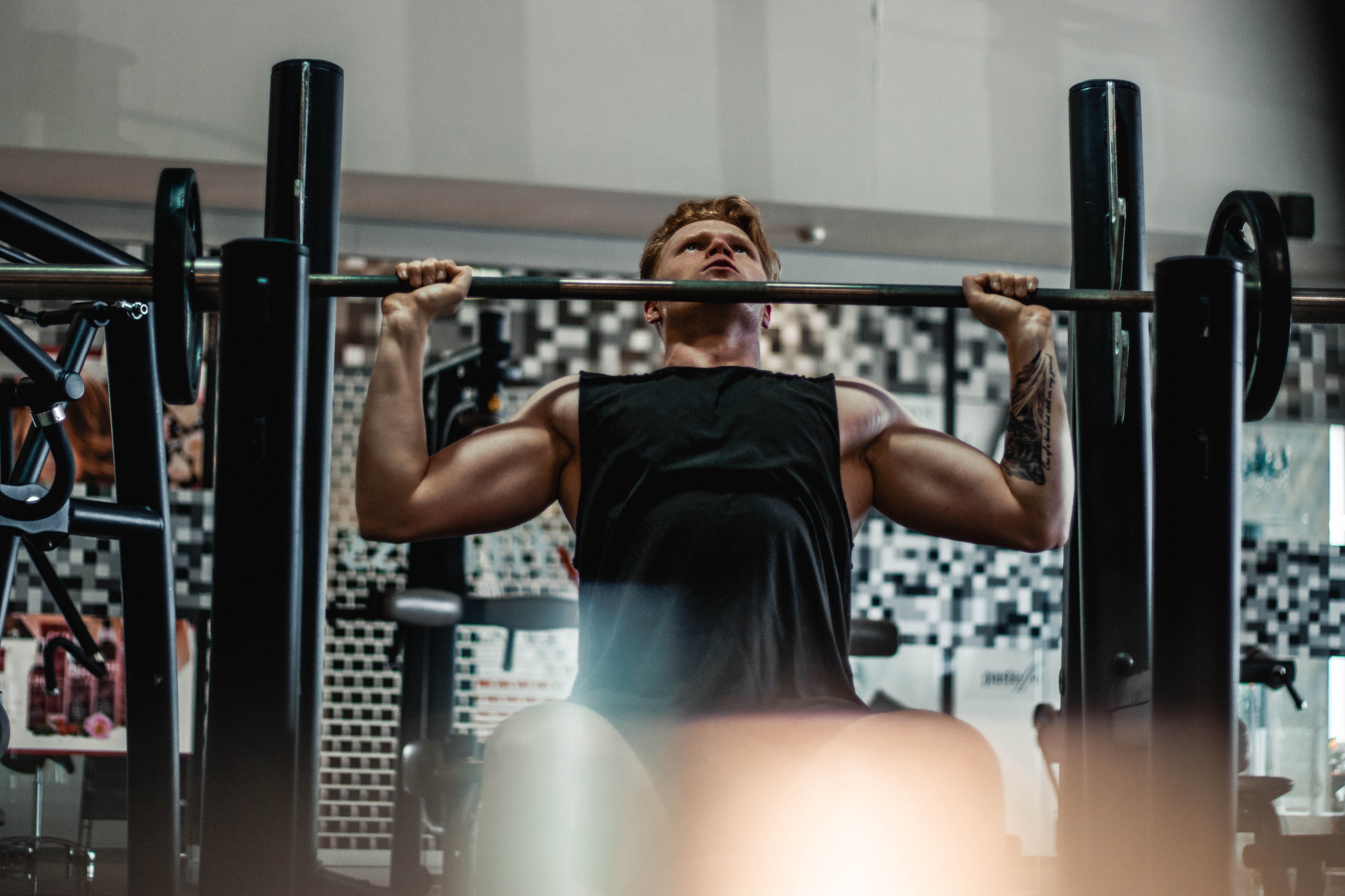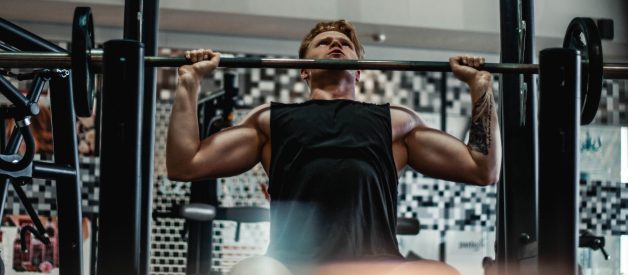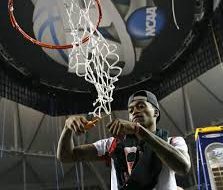I hate Bench Pressing ? mainly because I suck at it. Despite lifting weights since I was 15, I have never managed to hit that magical two plate lift of 100kg (220lbs). Even Jordan Peterson has accomplished that ? it?s embarrassing.
The problem is anytime someone learns I lift weights, I have to answer that dreaded question:
How much ya bench, bro??
While I cringe every time I hear it, the thought of answering is even worse.
It?s taken me a long time to accept I don?t possess the natural genetics for building muscle and strength ? I have a 6.5-inch wrist, and my body somehow manages to be skinny and fat simultaneously. But that hasn?t stopped me from making progress. With hard work and consistency, I achieved a 140kg Squat and 180kg Deadlift.
The only lift that refused to budge was my Bench Press. No matter what routine I tried, I kept plateauing at 80kg ? until I found the Smolov Jr. program.
After three weeks of hard training using this method, I went from a 1 Rep Max Bench of 85kg to an unspotted lift of 95kg.
That?s right; I increased my weakest lift by an astonishing 10kg in less than a month of training. This is coming from someone who has tried all sorts of routines with minimal gains over the last five years, including:
- Stronglifts 5×5
- Jim Wendler?s 5/3/1
- Westside Barbell
- Kinobody
What makes this even more remarkable is that I achieved these results despite:
- No changes to my diet
- Regular (and heavy) alcohol consumption
- A fractured foot half-way through the program
The results are so incredible, I?m compelled to share this program with everyone. If a scrawny wannabe like me can make such monumental gains, then I am so excited to see what it can do for you.
Let?s look at the program in more detail.
 Photo by Arthur Edelman on Unsplash
Photo by Arthur Edelman on Unsplash
The Smolov Training Protocol ? Overview
A basic google search of this routine will direct you to the forums of hardcore powerlifting sites. Reading these threads was initially off-putting, as there as a consistent debate as to whether a lifter needed to be on steroids to survive this program.
After much research, it turned out that the original route created by Sergey Smolov (nicknamed the ?Russian Master of Sports) was a brutal 13-week training program designed to boost the back Squat by 100lbs. It made sense that you might need some chemical assistance to survive that onslaught.
Thankfully, out of this controversy emerged a shorter yet equally intense version of this routine ? The Smolov Jr.
This trimmed-down edition of its monstrous predecessor is a more flexible beast that can be used on a broader range of lifts ? in particular, the Bench Press. It?s even been endorsed by the man who is responsible for bringing the kettlebell to the western world, Pavel Tsatsouline. There are few greater blessings in the world of strength training.
Results posted amongst the forums ranged from impressive to negligible. Lifters were quoting up to 15kg gains in the Bench Press and some boasting a 30kg increase on the Squat. I used the positive numbers as inspiration that real progress was possible, and mentally committed to the next three weeks. Before starting, I took five days off to ensure I was fully rested ? this is optional, but know that you are going to put your body through some intense workouts, and rest may be beneficial.
The Program Schedule
The Smolov Jr. has you benching four times a week combining heavy weights and high volume. The workouts are long and taxing both mentally and physically; however, if you can survive the onslaught, you are guaranteed to see great results.
To start the program, you will need to know your current 1 Rep Max and plug that number into the table below. I recommend you err on the side of caution to ensure you can finish the required sets and reps.
How you choose to divide the four training days is up to you. I found that the split below is most practical as it puts the hardest workout the day before the easiest rather than performing the two heaviest days back to back.
Week 1:
All weights are based as a percentage of your 1Rep Maxe.g. 1RM = 100kg, Monday = 6×6 70kg
- Mon ? 6 sets of 6 reps at 70%
- Wed ? 7 sets of 5 reps at 75%
- Fri ? 8 sets of 4 reps at 80%
- Sun ? 10 sets of 3 reps at 85%
Week 2 ? You will use the same schedule as the first week, but increase the weight by 2.5?5kg depending on how you feel (the goal is to add 5kg)
Week 3 ? Again, the same format, but add another 2.5?5kg
Week 4 ? Rest for a few days and test your new 1RM
Here is a worked example with my 1RM of 85kg:

As you can see, the expectations rise significantly with every session. If you think there is no way you will be able to complete weeks 2 and 3, don?t panic. Throughout my first week on the program, I could not fathom being able to add the required weight. There was no way I thought I would be able to lift the weights projected in week 3.
Despite my concerns, I got stronger every workout and never missed a rep. I was incredibly proud when I finished the final brutal session ? 10 sets of 3 with only 2.5kg less than my max. Belief is critical here ? trust the process and know that following the program as written will deliver the results. In other words, don?t make any custom modifications or enhancements. If you make changes to the routine, you?re no longer doing the program as intended.
What To Expect
Each day I kept notes of how workouts were progressing and how my body was responding. While I won?t bore you with the details of each session, there a few items worth mentioning:
- The workout duration can exceed an hour because you need to ensure adequate rest (3 minutes between sets)
- My upper body was extremely sore during week 1
- Towards the end of week 2, the soreness disappeared as I began to adapt
- The increased frequency was extremely beneficial for my technique as I started to establish a consistent groove
- Despite the volume, I experienced minimal shoulder or joint pain
- As I passed the half-way point (workout 6), I began to increase in confidence and feel myself becoming stronger. This was extremely motivating and kept me pushing through the last week of brutally heavy workouts.
As I mentioned previously, my biggest piece of advice is to trust the process. The program seems crazy at first, and you will doubt that you can make the lifts ? stick with it without trying to tinker or modify.
Testing Day
After my final session of 10×3 at 97% of my original max, I took four days off to recover and eagerly awaited my testing day.
On the day of my max, I ate a light meal and warmed up my shoulders thoroughly with resistance bands. My workout went as follows:
- Empty Bar x 10
- 40 x 5
- 60 x 3
- 70 x 1
- 80 x 1
- 90 x 1 (5kg PR ? Easy)
- 95 x 1 (10kg PR)
The 80kg mark represented just under my previous PR. I used this lift as my gauge for how to proceed next. I felt I could have got five easy reps with that weight, so I opted for a 5kg PR of 90kg.
To my disbelief, 90kg flew up with ease. I was in genuine shock and had to re-check that I had loaded the plates correctly. There are few better feelings in the gym then re-checking the bar because a lift was so easy!
Given the prior lift was comfortable, I excitedly added more weight and went for broke at 95kg. This was a fight at the usual midway sticking point; however, I persevered and completed the lift without issue. I resisted the urge to add more weight because I didn?t have a spotter present, but I think I could have managed another 2.5kg max.
If you decide to try this program, I recommend this approach of max testing as it?s an uncomplicated method that gives you the best chance of lifting a PR. Keeping the reps low and gauging how you feel around 95% of your original max seems like a sensible system for all.
 Photo by Valery Sysoev on Unsplash
Photo by Valery Sysoev on Unsplash
Should I do this program?
If you are a beginner to lifting weights, then no ? I would recommend you stick with a progressive overload routine such as Stronglifts 5×5 or Starting Strength. As a newbie, you will reap massive benefits from an elementary program that adds weight every workout. You should milk these gains while they are available and avoid missing out on what is considered a one time opportunity in the lifting community. When you reach the point that you can no longer add weight every few workouts, then this routine could be something to consider.
How long should I rest between sets?
As a general rule, a minimum of 3 minutes, however, I would not shy away from longer. During week three, the weights increase substantially without a reduction in total reps ? I needed to rest 5?7 minutes between sets on those last two workouts to avoid missing lifts. This is a strength-focused program that places no pressure on workout length or speed. The focus should always be on resting enough to recover and complete the next set ? we want to avoid missing any repetitions and get the most out of the workout.
Should I do any additional lifts/accessory work?
I recommend that avoid any extra pressing and perform additional pulling and shoulder pre-habilitation exercises to prevent imbalance and injury.
On Day 1 and 3, I added rows/pull-ups after the pressing. On Day 2 and 4, I included upper-back exercises (face-pulls) alongside a few sets of curls. Every workout began with an extensive warm-up for the shoulders, including band pull-apart and external/internal rotations.
How should I eat?
I made my gains by eating at just above maintenance. In hindsight, I would eat a calorie surplus to see if I could get more strength gain. It all depends on how important strength is to you compared with body composition. If you want to stay in the same condition, then eating at maintenance will be fine.
The one scenario I would avoid is trying to perform this routine during a calorie deficit. My previous attempts to increase my Bench Press while dieting failed miserably ? I actually lost strength despite adding weight to my Press and Deadlift. That doesn?t mean it?s impossible to increase lifts while in a deficit, but this was my personal experience on a fat-loss diet. I?ve seen it suggested on powerlifting forums that losing weight affects the mechanics of the Bench Press significantly. I have no scientific evidence to prove this, but my personal experienced agreed.
When should I test my new max post-Smolov Jr?
There is no perfect answer to this question as it will vary by individual. Before I tested my new max, I took four days off training entirely to give my body a chance to recover. I reasoned that highly regarded strength coaches such as Pavel Tsatsouline, Louis Simmons, and Joe DeFranco, emphasize the need for super-compensation after three weeks of intense training. For me, it made sense to rest and allow my body to adapt.
You may wish to test sooner or later, and you may want to have light sessions in between to keep confidence under the bar. My results were way beyond my expectations, so I have no regrets with the approach I took.
Conclusion
Overall I was thrilled with my results. After just three weeks of training, I had made more progress on my worst lift than the previous two years.
They say that insanity is doing the same thing repeatedly and expecting different results. If you find yourself in a plateau with your Bench Press, then give this routine a try. Follow the program with diligence (i.e., without changing the parameters), and reap the rewards of your hard work.


